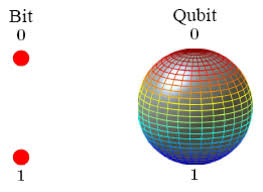Important Facts For Prelims
Manipulating Phonons for Quantum Computing
- 22 Jun 2023
- 4 min read
Why in News?
In a recent study, researchers from IBM have developed an Acoustic Beam-Splitter to manipulate Phonons to be used for Quantum Computing, potentially solving complex problems beyond the reach of conventional Computers.
- Beam-splitters, commonly used in optics research, split a beam of light into two parts. The working of a beam-splitter draws on quantum physics.
What are Phonons?
- Phonons are packets of vibrational energy and can be considered as the quantum equivalent of sound.
- Similar to photons, which are packets of light energy, phonons can potentially serve as units of information in quantum computing (qubits).
- Researchers are investigating ways to manipulate and control phonons for quantum computing purposes.
- The challenge lies in identifying methods to manipulate phonons analogous to the manipulation of electrons or photons.
What is Acoustic Beam-Splitter?
- It is a small device shaped like a comb with metal bars. It was placed in a short channel made of lithium niobate.
- At each end of the channel, there was a superconducting qubit that could emit and detect individual Phonons.
- The whole setup was kept at very low temperatures. The phonons represented the collective vibration of billions of atoms and behaved similarly to how photons interact with an optical beam-splitter.
- When a phonon was emitted from one side, it was reflected half the time and transmitted to the other side the other half.
- If photons were emitted from both sides at the same time, they all ended up on one side.
- The data confirmed that such two-phonon interference occurred, which shows phonons act just as quantum as photons.
What is Quantum Computing?
- About:
- Quantum computing is a rapidly emerging technology that harnesses the laws of quantum mechanics to solve problems too complex for classical computers.
- Quantum mechanics is a subfield of physics that describes the behavior of particles — atoms, electrons, photons, and almost everything in the molecular and sub molecular realm.
- It is an exciting new technology that will shape our world tomorrow by providing us with an edge and a myriad of possibilities.
- It is a fundamentally different way of processing information compared to today’s classical computing systems.
- Quantum computing is a rapidly emerging technology that harnesses the laws of quantum mechanics to solve problems too complex for classical computers.
- Features:
- While today’s classical computers store information as binary 0 and 1 states, quantum computers draw on the fundamental laws of nature to carry out calculations using quantum bits (Qubits).
- Unlike a bit that has to be a 0 or a 1, a qubit can be in a combination of states, which allows for exponentially larger calculations and gives them the potential to solve complex problems which even the most powerful classical supercomputers are not capable of.
- Significance:
- Quantum computers can tap into the quantum mechanical phenomenon to manipulate information and are expected to shed light on processes of molecular and chemical interactions, address difficult optimization problems, and boost the power of artificial intelligence.
- These could open the door to new scientific discoveries, life-saving drugs, and improvements in supply chains, logistics and the modelling of financial data.
UPSC Civil Services Examination Previous Year Question (PYQ)
Prelims
Q. Which one of the following is the context in which the term "qubit" is mentioned?
(a) Cloud Services
(b) Quantum Computing
(c) Visible Light Communication Technologies
(d) Wireless Communication Technologies
Ans: (b)







